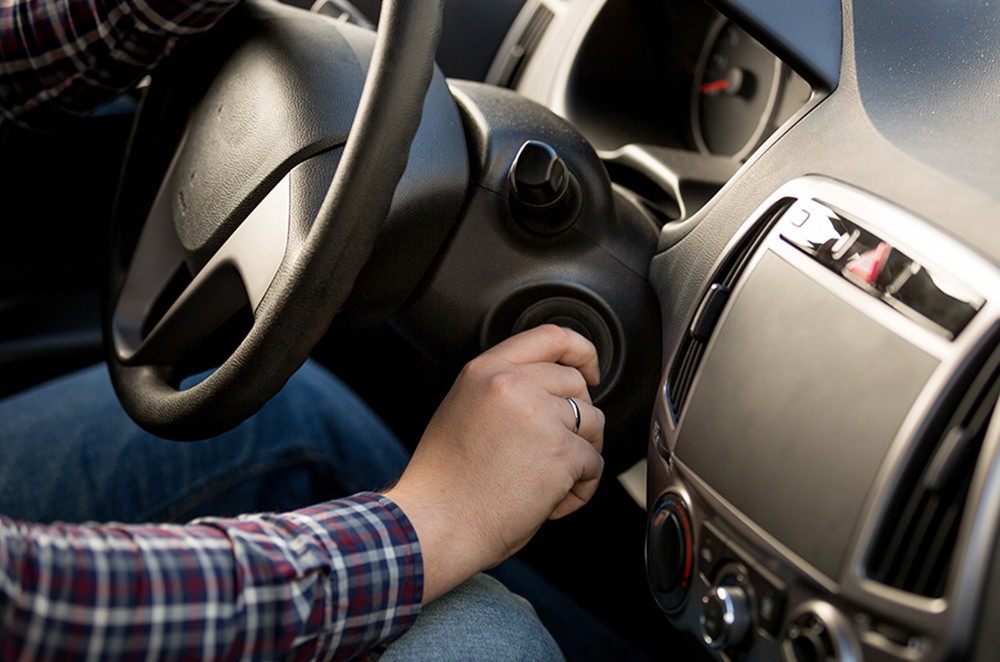Many drivers are familiar with the steering wheel locking mechanism in their vehicles, a feature designed for both security and safety. This system engages to prevent the front wheels from turning when the ignition key is removed or, in modern cars, when the start-stop system is inactive without the proximity key. While aftermarket devices like steering wheel clubs are available, many vehicles come equipped with this integrated security measure. Let’s delve into the purpose of this feature and how to effectively use your car’s auto steering wheel lock.
The Purpose Behind Your Auto Steering Wheel Lock
Primarily, the auto steering wheel lock serves as an anti-theft deterrent. Activating this lock effectively immobilizes the steering, preventing thieves from easily maneuvering your vehicle. Even if a thief manages to start the engine, the locked steering wheel will restrict movement to wide, impractical circles, significantly hindering any attempt to drive away. This built-in feature adds a layer of security, making your car a less appealing target for theft.
Beyond security, the steering wheel lock also functions as a safety feature, particularly useful when parking on inclines. When parking uphill, turning your wheels towards the curb and engaging the steering wheel lock minimizes the risk of your vehicle rolling downhill should the parking brake fail. This added precaution can prevent potential accidents and damage. Understanding these dual benefits highlights the importance of knowing how to properly use your car’s steering wheel lock.
How to Unlock Your Car’s Steering Wheel Lock
The process to unlock your steering wheel lock varies slightly depending on whether your car uses a traditional ignition key or a modern start-stop button system. Here’s a breakdown for each type:
For Cars with a Traditional Ignition Key:
- Gentle Wiggling: With your left hand, gently but firmly wiggle the steering wheel left and right. Apply consistent, moderate force as you do this.
- Key Turn: Simultaneously, use your right hand to turn the ignition key. Insert the key into the ignition and attempt to turn it from the “lock” position to the “accessory” (ACC) or “start” position while continuing to wiggle the steering wheel.
- Disengagement: As you turn the key and wiggle the wheel, you should feel the steering wheel lock disengage, allowing you to turn the key fully and start your car.
For Cars with a Start-Stop Button:
- Steering Wheel Movement: Similar to the key ignition, use your left hand to wiggle the steering wheel back and forth with firm, steady pressure.
- Press Start Button: While wiggling the steering wheel, use your right hand to press the start-stop button once. Crucially, do not press the brake pedal during this step. Pressing the brake will initiate the engine start sequence instead of just moving the ignition to ACC mode.
- Unlock Confirmation: Pressing the start-stop button (without the brake) while wiggling the wheel should move the ignition to ACC mode and unlock the steering wheel.
How to Engage Your Car’s Steering Wheel Lock
Locking your steering wheel is a straightforward process, and the method is generally the same for both ignition key and start-stop button vehicles:
- Turn Off Engine: Ensure your vehicle is completely turned off and the engine is no longer running.
- Steering Wheel Turn: Turn the steering wheel either to the left or right. Apply a slight but firm pressure.
- Listen for the Click: Continue turning the wheel until you hear a distinct “click” sound. This audible click indicates that the steering wheel lock mechanism has engaged successfully.
Troubleshooting Issues with Your Steering Wheel Lock
Over time, the components of your car’s steering wheel lock can experience wear and tear, leading to malfunctions or glitches. Here are some troubleshooting tips if you encounter issues:
For Ignition Key Systems:
- Lubrication: Try spraying a lubricant specifically designed for locks into the ignition cylinder. This can sometimes resolve issues caused by sticky or worn tumblers within the cylinder.
- Different Key: If you have spare keys for your vehicle, try using a different key. Sometimes, a key can become worn, preventing it from properly engaging the ignition cylinder.
- Ignition Cylinder Replacement: If lubrication and trying different keys don’t work, the ignition cylinder itself might be worn or broken and require professional replacement.
For Start-Stop Button Systems:
- Key Fob Battery: Check the battery in your key fob. A low battery can sometimes cause issues with the car recognizing the key and disengaging the steering lock. Some vehicles display a low battery warning on the dashboard.
- Spare Key Fob: If you have a spare key fob, try using it. This will help determine if the issue is with the primary key fob or the car’s system.
- Professional Inspection: If battery replacement and using a spare key fob don’t resolve the problem, there may be an issue with the car’s electronic system or the steering lock mechanism itself, requiring professional diagnosis and repair.
Understanding and properly utilizing your car’s auto steering wheel lock is essential for both security and safety. By following these guidelines, you can ensure your vehicle is protected and you’re using all available safety features effectively.
